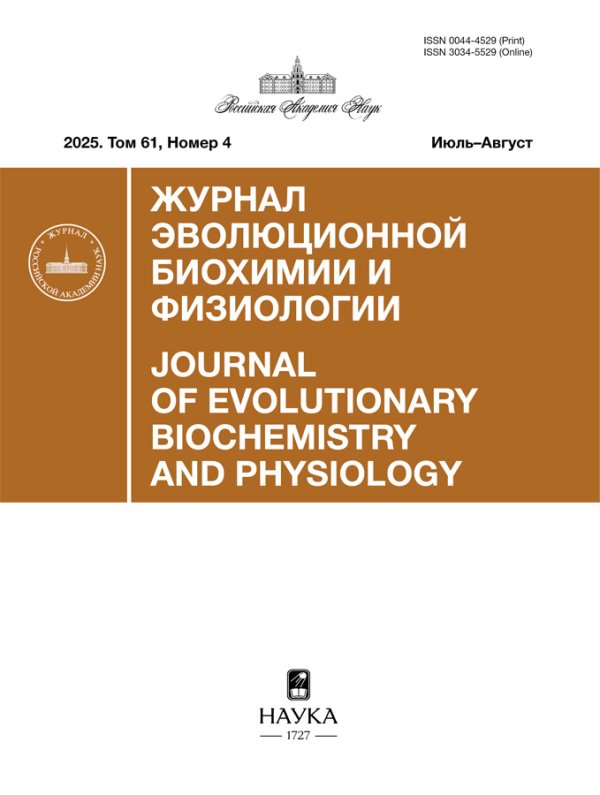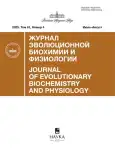Journal of Evolutionary Biochemistry and Physiology
ISSN (print): 0044-4529
Media registration certificate: PI No. FS 77 - 67139 dated 09/16/2016
Founder: Russian Academy of Sciences
Editor-in-Chief: Veselkin Nikolay Petrovich
Number of issues per year: 12
Indexation: RISC, list of Higher Attestation Commissions, CrossRef, White List (level 4)
Journal of Evolutionary Biochemistry and Physiology publishes experimental and review articles on comparative and ontogenetic physiology and biochemistry, as well as on the evolution of functions, morphology, pharmacology, pathophysiology, and ecological physiology.
Current Issue
Vol 61, No 4 (2025)
REVIEWS
Evolutionary aspects of the neurophysiological role of tyramine and octopamine
Abstract
 211-225
211-225


THE NEUROPROTECTIVE EFFECT OF NON-CODING RNAS IN ISCHEMIA AND REPERFUSION OF THE BRAIN MAY BE MEDIATED BY A DECREASE IN THE LEVEL OF ATG PROTEINS
Abstract
 226-240
226-240


EXPERIMENTAL ARTICLES
Study of protein-dust aggregates formation in a solution of serum albumin containing dust from a mining and metallurgy enterprise
Abstract
 241-250
241-250


Possible pathways and mechanisms of weak alternating magnetic fields influence on cognitive functions in drosophila melanogaster
Abstract
 251-259
251-259


FROM THE EDITOR
The Art of Scientific Publication. An Editorial Series. Part II: Statistical Analysis: From Experimental Design to Reporting
Abstract
 260-268
260-268












